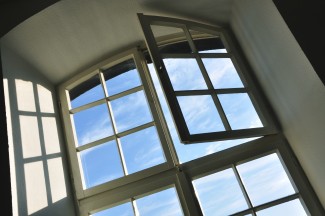Just stay home. It’s the most important thing that many of us can do during the COVID-19 pandemic—for our own safety and for public health. For those fortunate enough to have safe, comfortable, healthy homes, this quarantine may be manageable. Millions of Americans, however, live in homes that are uncomfortable or even unsafe.
Home energy efficiency and healthy-home improvements are usually treated separately. However, according to an ACEEE report released today, nearly $3 billion can be saved by using existing energy efficiency programs to tackle a small group of health harms: fatal falls, asthma attacks, and exposures to extreme heat and cold.
This integrated approach saves money and lives: more than $2 billion over the next decade by avoiding falls and more than half a billion dollars from improved asthma outcomes. The report offers new tools for calculating these benefits.
Lead author Sara Hayes says: “Insulation and air sealing save energy, but they also protect people from heat waves and other harmful effects of climate change. Combining these services with strategies to identify and address a person’s asthma triggers — such as pest management and removal of indoor irritants — can reduce asthma symptoms and even prevent hospital visits. Our estimates are conservative because once we start thinking of energy programs as health programs, there is huge potential to save lives and improve quality of life by targeting services to the millions of people who struggle with these health risks.”
Every year, electric and natural gas utilities invest billions of dollars into a large nationwide network of energy efficiency programs. At the same time, the U.S. Department of Energy’s Weatherization Assistance Program (WAP), the largest residential whole-house energy efficiency program in the country, is working to improve some of the most inefficient homes by offering air sealing, insulation, and upgrades to HVAC units, all of which can improve indoor air quality and thermal comfort. WAP workers may also install smoke and CO detectors, fix faulty heating and combustion systems, and identify mold and moisture hazards, measures that can protect health and save lives.
At the same time, the Affordable Care Act’s emphasis on preventive approaches to health care creates opportunities for this existing network of energy efficiency programs to increase health benefits for participants and expand programs and services with new sources of funding. Translating these health benefits into avoided health costs can create an evidence base for linking energy-saving programs with health outcomes, information that can be used to make a compelling case for partnership and funding to hospitals, insurers, and other health care providers. So far, energy programs have been missing this opportunity (stay tuned for more on this in ACEEE’s forthcoming report on braiding funding for health and energy savings programs).
“It’s really important to quantify and monetize the impacts we see from comprehensive energy and health programs. This type of data will empower decision makers in both sectors to prioritize financial investments where we can have the biggest impact,” says Hayes.
In the past, it has been difficult to produce monetized estimates of the health benefits that energy-efficiency programs can create for participants and society at large. ACEEE’s new tools can be used to calculate the financial savings these interventions can produce. If weatherization programs added a few more interventions that focus on four common health risks — asthma, falls, and exposure to extreme heat and cold — they could substantially increase their positive health impacts.
“Our numbers show only a fraction of what is possible,” Hayes emphasizes, “Households participating in energy programs stand to realize some major health benefits; the sooner energy programs recognize this, the better.”
“The COVID-19 pandemic has put homes at the center of our national conversation, highlighting the disproportionate health and housing burdens faced by some communities.There is significant potential to impact health and reduce energy burdens by combining energy-efficiency and healthy-home improvements. By combining resources from the health and energy sectors, programs can be positioned to receive expanded funding for vulnerable populations, enabling them to provide more services and reach more households.”




